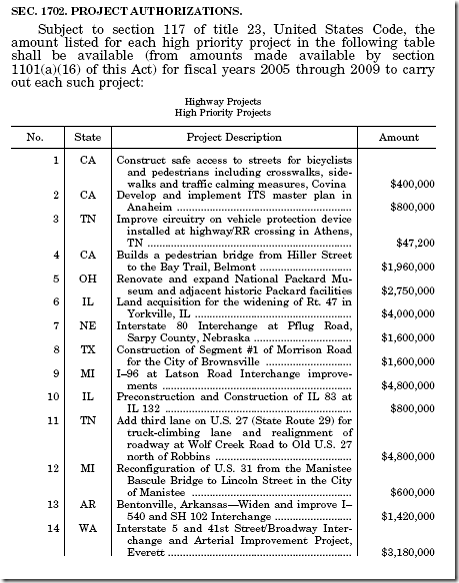Defense earmarks
Each year Congress considers the “defense authorization bill.” This bill gives the U.S. military its legal authorities.
The House passed this bill last Thursday. One provision in the bill would attempt to limit the President’s ability to ignore certain earmarks in the report language that accompanied the bill. This is an important moment in the debate on how to handle earmarks.
I want to focus on those earmarks which are not written into the text of the bill, but are instead included in the report that accompanies the bill. I’m going to delve into the mechanics of earmarking and the current legislative dispute, because the details matter a lot.
As a reminder, we define an “earmark” like this:
(T)he term “earmark” means funds provided by the Congress for projects, programs, or grants where the purported congressional direction (whether in statutory text, report language, or other communication) circumvents otherwise applicable merit-based or competitive allocation processes, or specifies the location or recipient, or otherwise curtails the ability of the executive branch to manage its statutory and constitutional responsibilities pertaining to the funds allocation process.
Here is a snapshot of part of a table in the highway law, enacted in 2005. This is an example of a earmark that was in the legislative language of the 2005 highway bill, and is now part of the law.
The full table of “high priority projects” in this highway bill is 197 pages long and contains 5,173 specific line item earmarks. Since they are part of the law, each one is a legal requirement – the Department of Transportation must fund each one.
Now let’s look at the committee report that accompanies the defense authorization bill. It, too, contains earmarks. Here’s one:
Niagara Air Reserve Base, New York
The committee believes that timely infrastructure improvements should be made at Niagara Air Reserve Base and should be provided priority in the Future Years Defense Program (FYDP). Therefore, the committee urges the Secretary of the Air Force to accelerate projects, such as the programming to design and construct a small arms range at Niagara Air Reserve Base, New York, in the next FYDP.
Since it’s in report language and not legislative language, this earmark is not legally binding on the Executive Branch. Note the difference in form between a legislated earmark and one in report language:
- legislative earmark – “the amount listed for each high […]
